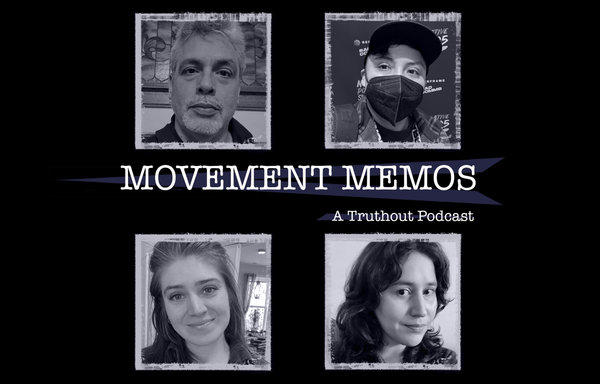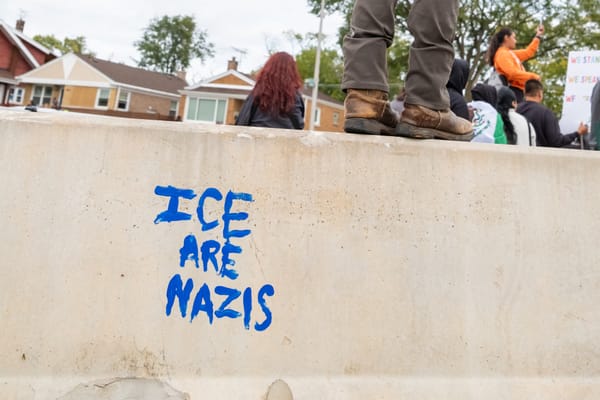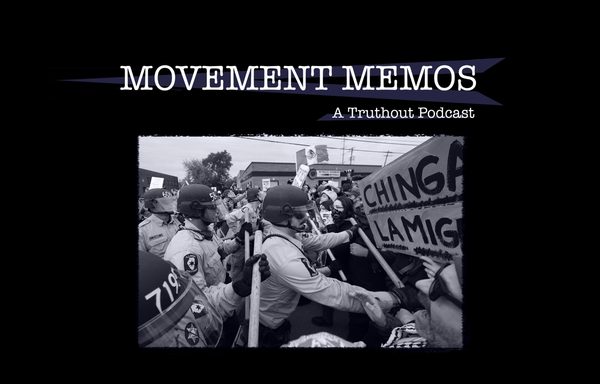Must-Reads and the War on Chicago
"Chicagoans will not be a conquered people."
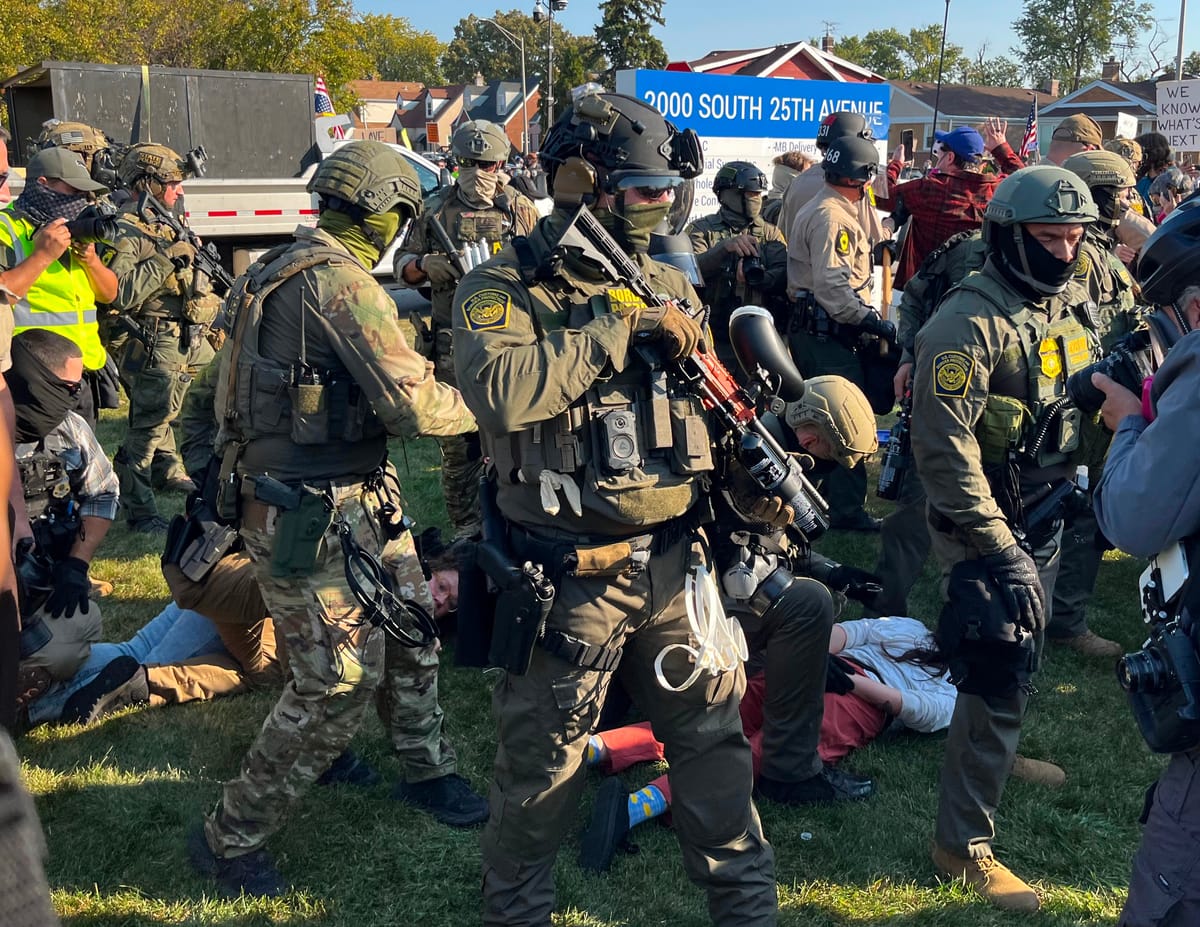

Greetings friends,
If you’re here for my must-reads list, you can find that at the top. If you’re here for a rundown of Trump’s recent escalations in Chicago, scroll down.
Must-Reads
- Massive Immigration Raid on Chicago Apartment Building Leaves Residents Reeling: 'I Feel Defeated' by Cindy Hernandez. “Armed federal agents in military fatigues busted down their doors overnight, pulling men, women and children from their apartments, some of them naked, residents and witnesses said. Agents approached or entered nearly every apartment in the five-story building, and U.S. citizens were among those detained for hours.”
- DHS Plans More State-Run Extrajudicial Black Sites Like “Alligator Alcatraz” by Thomas Kennedy. “This state-run, extrajudicial model for immigration jails is threatening to proliferate not just in Florida but across the U.S.”
- Trump’s ICE Has Started Targeting Activists, Not Just Immigrants by Mike Ludwig. “As President Donald Trump prepares to further unleash a rapidly expanding surveillance state against the administration’s critics, recent legal struggles from activists who document and protest Trump’s mass deportation campaign may be a preview of what’s to come as part of a broader effort to silence dissent.”
- The Trump Administration Is Coming for Nonprofits. They're Getting Ready by Vittoria Elliott. “Within hours of the murder of conservative podcaster and activist Charlie Kirk—and in the absence of a suspect—high-profile figures on the right, from vice president JD Vance to deputy White House chief of staff for policy Stephen Miller, already had a different culprit in mind: nonprofit organizations.”
- World’s Oceans Fail Key Health Check as Acidity Crosses Critical Threshold for Marine Life by Jonathan Watts. “‘To be a good scientist, I have to take emotions out of work. Still, I would say looking at this data, when I allow myself to connect to it emotionally, then I am afraid. This really scares me,’ [Levke Caesar] said.”
- The Right’s Baseless Project to Link Trans People With Extremism by Melissa Gira Grant. “Following Kirk’s murder, the Heritage Foundation began pushing for the FBI to create the new designation of ‘transgender ideology–inspired violence and extremism,’ or ‘TIVE.’”
- ‘We Will Never, Ever Escape’: Inside the Ever-Tightening Siege of the Sudanese City of El Fasher by Mark Townsend. “Famous for her gap-toothed perma-grin, the 43-year-old single mother was an El Fasher legend, the survivor of more than 150 battles. If she fell, everyone agreed, so would the city.”
- Gaza’s Children Have Become Vulnerable to Life-Threatening Rare Diseases by Ghada Abu Muaileq. “‘Children are not receiving even the minimum amounts of protein their immune cells need to function,’ [Dr. Eyad Saeed] said.”
- How ICE Raids Are Making It Easier for Civilian Men to Assault Immigrant Women by Kylie Cheung. “The allegations are horrifying: A North Carolina man has been accused of posing as an ICE agent, threatening to deport an immigrant woman, then kidnapping and raping her; police in New York are searching for a man suspected of posing as an ICE agent, assaulting and trying to rape a woman, before robbing her and fleeing the scene in broad daylight.”
- How Can We Live Together? by Olúfẹ́mi O. Táíwò. “Common decency stigmatizes people that do not participate in it—removes them from voluntary association. We indeed have to live with one another, but terms and conditions apply.”
ICYMI
This week, on Movement Memos, I talked to my friends Maya Schenwar and Eman Abdelhadi about immigration raids and the brutal repression of protesters who are resisting Trump’s campaign of terror. We also talked about the administration’s broader effort to suppress free speech and dismantle the organized left. Maya and Eman are also contributors to our upcoming book, Read This When Things Fall Apart: Letters to Activists in Crisis, so we also discuss lessons from the book and share words of support and advice for organizers and activists who are overwhelmed and struggling right now. I highly recommend checking this one out.
Ways to Take Action
If you are trying to get your head around recent policy developments, or searching for ideas about how to take action wherever you are, don’t miss this month’s edition of This Month in Criminalization. Every activist should bookmark some of the resources Andrea Ritchie shares in this newsletter—including the “antifa” executive order explainer from Muslims for Just Futures.
The War on Chicago
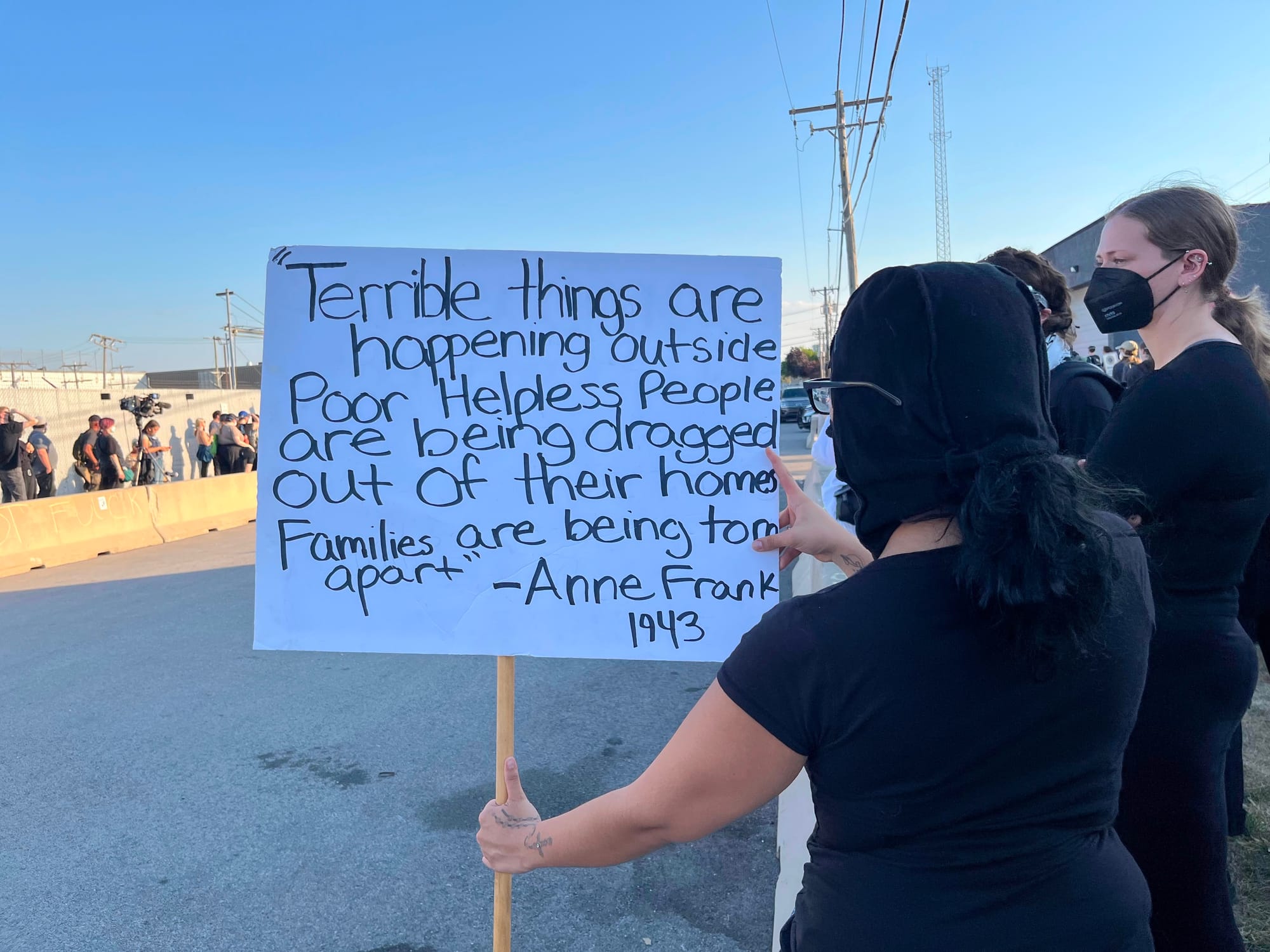
According to the Department of Homeland Security, more than 900 people have been arrested since the launch of “Operation Midway Blitz”—a federal campaign of terror the administration has waged against Chicagoland since September 8—though that number has not been independently confirmed.
On the night of September 30, hundreds of federal agents surrounded and stormed an entire South Shore apartment building near 75th and South Shore Drive. Agents rappelled from helicopters onto the building’s roof, broke down doors, and forcibly removed citizens and non-citizens alike from their homes during the attack. Neighbors say children were taken from their beds and zip-tied together. Some of the children were reportedly naked as they were forced into the street, where they remained for hours, before some were dragged into vans. As neighbors expressed concern for the children, one witness claims an agent laughed and said, “fuck them kids.” Residents report that their homes were more or less looted, with toys and personal papers scattered across hallways. One resident whose door was not successfully knocked down during the raid said that his electronics and furniture were seized while he was at work the next day.
Friday morning, in the village of Broadview near Chicago, Illinois state police arrested people who tried to block ICE vehicles, in a bid to localize crowd control of protests outside the Broadview ICE facility, where protesters have tried to disrupt ICE activity, and ICE agents have frequently responded with tear gas, pepper balls, and foam baton rounds. The Illinois state police were joined by police from the County Sheriff’s Department, who insisted they were there for our protection. However, when protesters attempted to move into the street, they were violently corralled onto sidewalks by the state and county police. Even though the protesters had effectively been contained in this manner, ICE agents eventually marched up Harvard Street and attacked the crowd anyway—an action that state and county police participated in. The federal agents were accompanied by a camera crew and used drones to film the attack, which preceded the passage of Kristi Noem’s motorcade through the area. Like the attack in South Shore, the moment seemed to have been aimed at content creation. A number of protesters and journalists were manhandled and brutalized by agents, myself included. Five activists were arrested.
On Friday, in the Logan Square neighborhood, federal agents deployed tear gas from an SUV in the middle of a residential neighborhood—just blocks from an elementary school and a grocery store. The incident was caught on video. Witnesses say the agents were being heckled by neighbors as they rolled down the street. A federal agent rolled down a window and lobbed a tear gas canister directly into the street. The cloud drifted toward homes, toward families. “For no reason, [they] tear gassed the whole crowd,” one witness told NBC Chicago. DHS has offered no explanation or comment on the incident.
That same day, Chicago Alderwoman Jessie Fuentes was handcuffed by federal agents in Humboldt Park while trying to speak with them about their presence in the neighborhood hospital.
On Saturday morning in Chicago’s Brighton Park neighborhood, Border Patrol agents shot a woman near 39th and Kedzie. The official justification for this shooting has been fantastical and shape-shifting in nature. In one version, the woman was armed with a semi‑automatic weapon, and agents fired “defensive shots.” In another, she was merely caught in the crossfire—struck when agents opened fire on someone else allegedly trying to run the agents over. (DHS previously claimed that Silverio Villegas Gonzalez attempted to run ICE agents over, alleging that one agent was seriously injured, before the agents shot and killed Villegas Gonzalez—a story that does not match available evidence.) DHS also claimed that the woman they shot had been identified in a CBP intelligence bulletin for doxing federal agents. None of these allegations—about weapons, vehicles, or online threats—have been verified. There is no video, no photo, no credible witness account to back DHS’s contortionist claims, which should be regarded as fascist propaganda.
What is known: the woman survived. She drove away from the scene and received emergency assistance at a nearby auto shop. Paramedics transported the woman to Mount Sinai Hospital hospital, where she was treated and released.
When neighbors gathered to protest the shooting, federal agents unleashed tear gas, pepper balls, and foam rounds—striking demonstrators, legal observers, journalists, and people just trying to get home. Chicago police were also visibly overwhelmed by tear gas.
On Saturday, the Trump administration announced that he would send the National Guard to Chicago. White House spokeswoman Abigail Jackson told the press, “President Trump has authorised 300 national guardsmen to protect federal officers and assets.”
On Saturday, a federal judge in Oregon blocked Trump’s attempt to federalize that state’s National Guard to send troops into Portland. In her ruling, Judge Karin Immergut wrote that the administration’s justification was “simply untethered to the facts,” finding no evidence of the kind of widespread chaos that could legally justify deploying the Guard over a governor’s objections. The order, which lasts until at least October 18, makes clear that states still have constitutional standing to resist federal takeover of their National Guard units. Whether the administration will respect the court’s ruling, or if this decision will strengthen the hand of city and state officials resisting the federal invasion of Chicago, remains to be seen.
The immigration crisis the administration claims to be responding to is no crisis at all. Chicago is a welcoming city. We have sanctuary policies. Immigrants are welcome here. The president is waging war on our city for welcoming those he wishes to expel. DHS is terrorizing our communities and staging violent spectacles to produce fascist propaganda—and sometimes, for what appears to be purely recreational violence. This is a pivotal moment in the struggle against fascism and authoritarianism. To ignore what’s happening in Chicagoland would be a damning mistake. Trump is normalizing attacks on blue cities because he intends to overpower hubs of democratic resistance. He plans to hold onto power—and expand it—by any means necessary, legal constraints and elections be damned. The entire country must raise their voices against this aggression. In Chicago, activists and organizers are exhausted, but we will continue to do all we can. Chicagoans will not be a conquered people.
Read This When Things Fall Apart is Coming Soon
It feels strange to take a moment to talk about the pending publication of my upcoming book, Read This When Things Fall Apart: Letters to Activists in Crisis, amid everything that’s happening in Chicago. But I am mentioning it today because my author’s copies arrived this week, and I was reminded that this book is desperately needed right now. The lessons, care, and hard-won wisdom that my friends and co-strugglers offer in this book are needed here in Chicago, and around the country right now.
The book’s table of contents reads like a crisis directory—“read this if…” [insert heartbreak, setback, disaster, or breaking point]. I wrote the first and last letters in the collection, and if you preorder from my favorite bookstore, Pilsen Community Books, or from AK Press, you’ll receive an extra letter from me tucked into your copy when it arrives.
I’m technically the editor of this book, but it feels more like a project I organized than something I edited. It’s a bundle of letters for people in the throes of injustice, struggle, and uncertainty. It’s a care package that I made for you with my friends, and I think it’s a gift we all need right now.
Preorders will help determine whether this book is widely available on store shelves, so I am really grateful to anyone who preorders the book, requests that their library carry it, or raises awareness of the book online. If you would like to donate a copy to an activist in need, you can do that here.
As Robin D. G. Kelley, author of Freedom Dreams, said of the book:
We all need these letters, not just in times of crisis or defeat. It is the only book you’ll hold that will hold you, free you, permit you to fail, rest, retreat, grieve, live, laugh, fight, and heal—to be human. This book must never go out of print.
Read This When Things Fall Apart: Letters to Activists in Crisis will be released November 4.
Much love,
Kelly
Organizing My Thoughts is a reader-supported newsletter. If you appreciate my work, please consider becoming a free or paid subscriber today. There are no paywalls for the essays, reports, interviews, and excerpts published here. However, I could not do this work without the support of readers like you, so if you are able to contribute financially, I would greatly appreciate your help.

